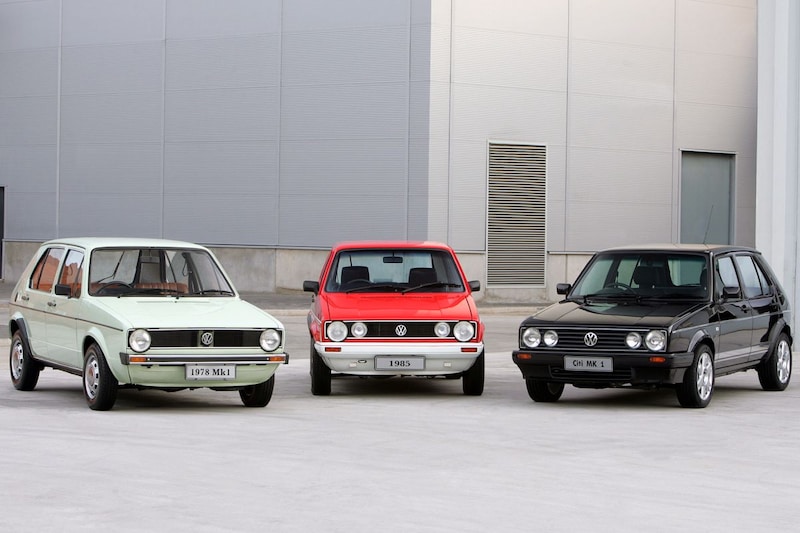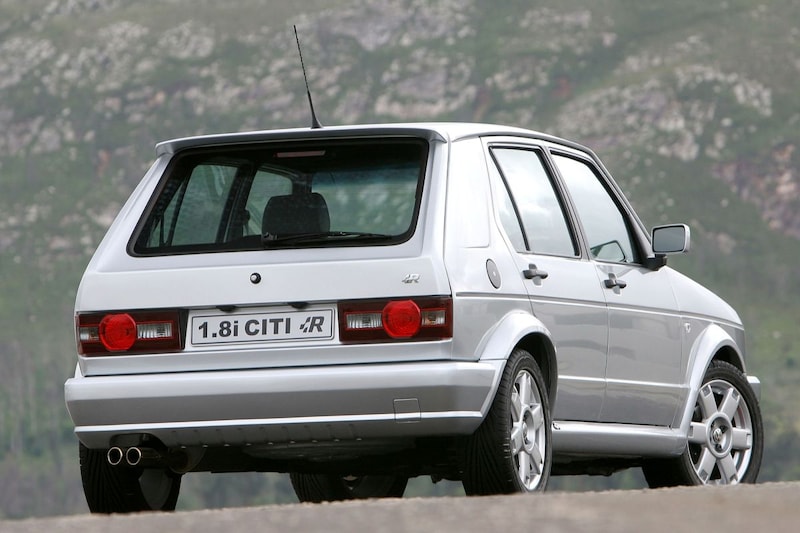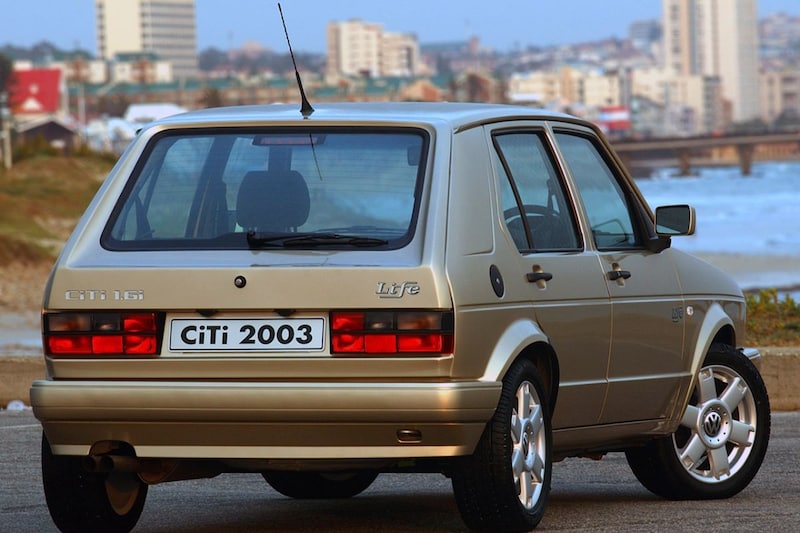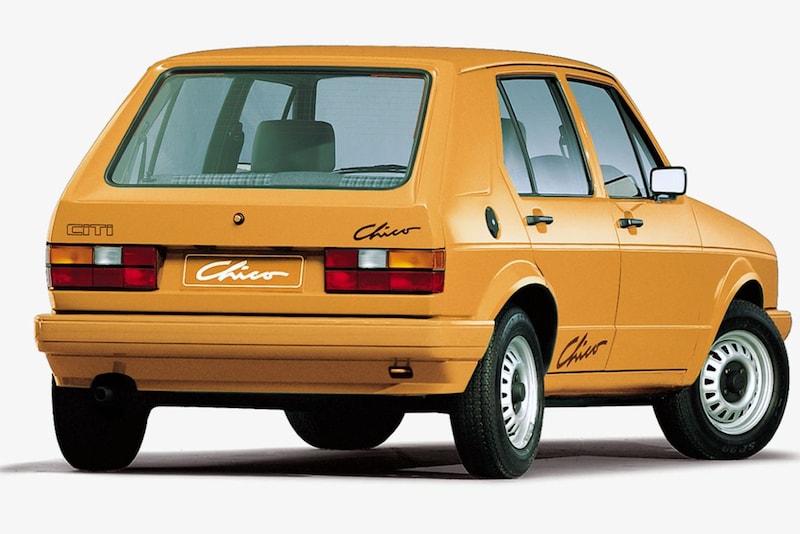South African Gulf I survived four generations of Gulf after


Everyone understands that the first generation of the Volkswagen Golf is an icon. But what not everyone knows is that in one country on earth, this Golf 1 remained in production for a quarter of a century and survived three successive Golf generations. Meet the Volkswagen Citi Golf.
In South Africa, the Volkswagen Golf only came on the market in 1978. That was very late, if you consider that the small VW came on the market with us in 1974. But in South Africa the market is different than in Western Europe. Volkswagen South Africa has been producing cars since 1951 and the factory in Uitenhage, near Port Elizabeth, was still building Beetles at the end of the 1970s.
Beetles started in 1951
The factory in Uitenhage was founded in 1946, but South African Motor Assemblers and Distributors Ltd (SAMAD) still built Studebakers there, twelve units a day. In 1951 the company started assembling Volkswagen Beetles and it went so well that Volkswagen took over the company in 1957. The factory then continues to build Beetles and Transporters and the Beetle even remains in production until 1978. Only then does the factory switch to the Golf. In May 1978, the first South African Volkswagen Golf comes off the assembly line. It is also a real South African car, because more than half of all parts are home-grown.

Golf 1.3 earlier than in Germany
Because the novelty has worn off for Volkswagen in the meantime, Volkswagen South Africa is allowed to determine its own implementation details. And so it may happen that the 1.3 liter engine is already available there in 1978, while it only becomes available in the German Golf a year later. Incidentally, the first Golf in South Africa is only built as a four-door model.
Low wages make South Africa attractive
At that time, Volkswagen was by no means the only car manufacturer in South Africa. Despite its turbulent history, it is one of the most prosperous and most industrialized countries on the African continent. Wages are low and car brands can export their products to all over Africa. As a result, there has been a lot of car industry in the country since the 1950s and 1960s. Mercedes-Benz already produced pick-up versions (bakkies) of the well-known 190 ‘bowler hat’ models in the 1950s, BMW has been active there since the 1970s (with these exclusive delicacies, for example) and Japanese manufacturers such as Honda, Mitsubishi and Mazda have or had production facilities there. Because of the centuries of British rule, the English brands also had factories in South Africa, but that came to an end around 1970. General Motors also built cars there until the 1990s.
Golf II has also been available in South Africa
The Golf II came on the market in South Africa in 1984. With its low-sloping bonnet and wide C-pillar, it clearly shows kinship with the first Golf. But he’s bigger. And heavier, rounder, rounder, longer, wider and higher. The new Golf is more car, more Volkswagen than its predecessor. And, oh yes, that’s true, it’s also more expensive … For Volkswagen SA (SA = South Africa) that’s a problem, because part of the Golf buyers will not be able to afford the new model. So there must be a cheaper model under the Golf II, but what kind of model? The Polo is not sold in South Africa, and if it were to be built in Uitenhage now, it would cost a lot of money to get production going. And even then it is a two-door model, while in South Africa two-door cars are almost impossible to sell.
No Polo, so just a Golf I under the II
A stripped-down version of the Golf II is also not a solution, because even without a sun visor for the passenger and a flap on the glove compartment, that car will still be too expensive. The only solution is… to keep the Golf I in production. With that idea, a bare version of the Golf I is built, painted in an uninspiring beige color, with the smallest engine under the hood, the 1,100 cc. However, that is such a boring and undesirable car that this idea will not be continued either.
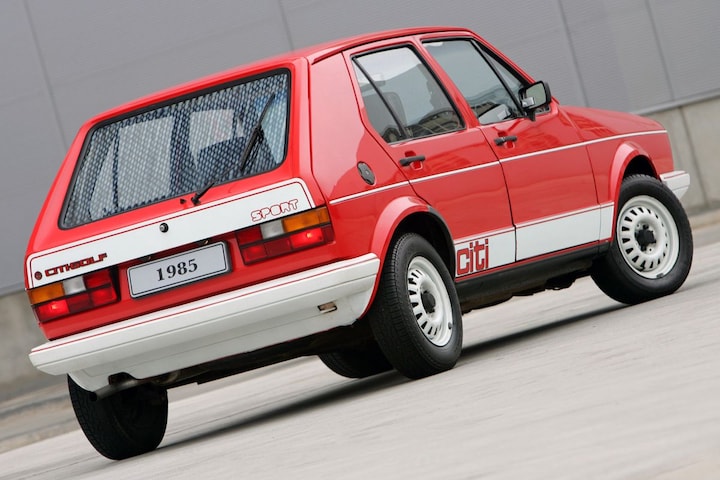
Marketing department invents the Citi Golf
Then the marketing department gets involved. That makes a Golf I especially for hip, young city dwellers. The car will not be boring beige, but sparkling red and will be given an extra name: Citi. Positioned as hip and sexy, it gets gloss white stripes, white bumpers and white wheels and a 1.3-liter engine with 65 hp under the hood. There is initially only one version, options are not available, and you can order it in three colors: red, yellow and blue. That also became the slogan in television commercials: ‘Red, yellow and blue … this one’s for you!’ The model caught on almost immediately, sales quickly ran into the thousands, until nearly 8,000 Citi Golfs were sold in 1988.
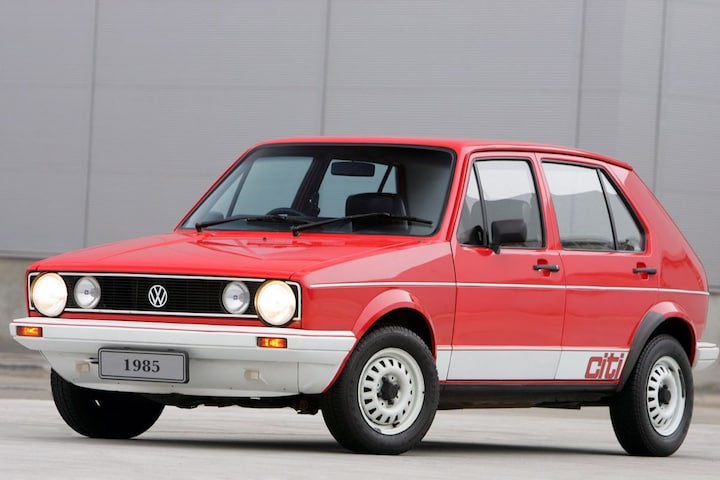
City Sports
Volkswagen SA doesn’t know it yet, but with that first Citi Golf a classic was born. In 1983, a year before the South African introduction of the Golf II, production of the first Citi Golf started. Shortly after the introduction, the color black is added to the palette, and you can also order the Citi Sport a little later, with the 1.6-liter engine from the old GTS. That is the beginning of an endless series of variations.
Thick bumpers for the Citi Golf
In 1989, the Citi Golf is widely sold, despite the fact that it is a fifteen-year-old model. That year there will be a facelift that should give it a more modern appearance: the grille slopes forward like the grille of the Golf II, the bumpers are thicker and there will be a crease in the shape of an ice hockey stick in the C-pillar. That crease becomes iconic, but its actual purpose is to add extra strength to the bodywork. The Citi Golf Sport gets the 1.8-liter engine with 95 hp and the engine of the old European Golf GTI comes with its 110 hp in the Citi Golf Sport CTI. There will also be a new entry-level model: the Volkswagen Citi Golf Shuttle. It doesn’t have anything, no rear window wiper, no make-up mirror and no handle for the passenger.
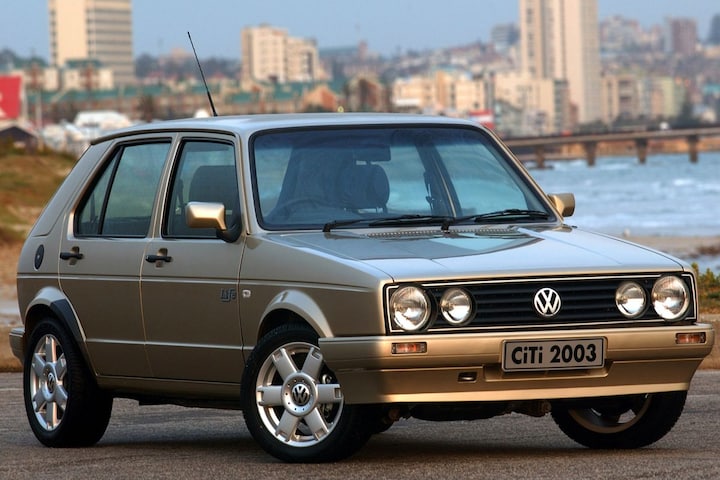
Up to and including the Gulf V
The triumphal march of the Citi Golf continues and even takes it up a notch. From 1990 about 15,000 units are sold per year, in 1995 almost 27,000. This means that the small Volkswagen has a market share of almost half in the cheap class in South Africa.

While the Citi Golf is built year after year in Uitenhage, the factory also produces the current Golf models there. The Golf III replaces the Golf II in 1992. The III later gives way to the Golf IV and that makes way for the Golf V. And all the while, imperturbably, the Citi Golf has been rolling off the line in the same factory in Uitenhage.

The dashboard of the first Skoda Fabia
New variants and larger engines follow in 1998. The model even effortlessly enters the new millennium. The biggest change follows in 2003 when the Citi Golf in all versions gets a new dashboard and steering wheel, which looks suspiciously like that of the Skoda Fabia.
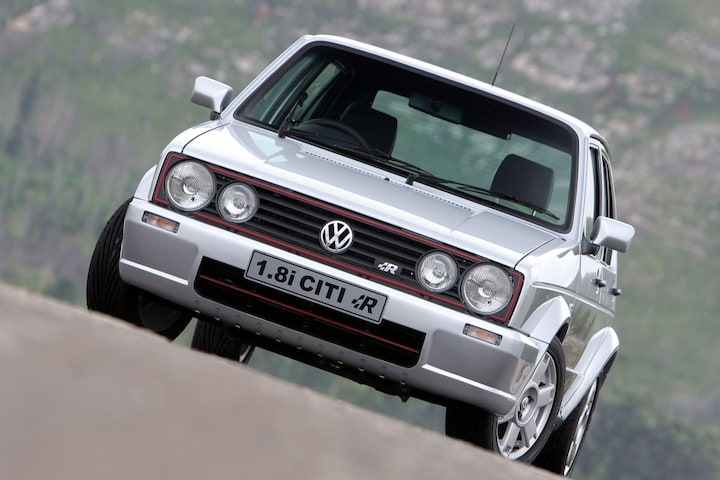
Volkswagen Citi Golf R Line
R-Line with 120 hp, only the Oettinger GTI 16S was faster
In 2007, the icing on the cake follows when the Citi Golf 1.8i R-Line appears, which delivers 120 hp and thus achieves a top speed of over 190 km / h. Apart from the rare GTI 16S, which was only available in France and had a sixteen-valve engine (from VW, the 16V only came for Golf II) from tuner Oettinger, the R-Line is the fastest version of the Golf 1 ever built. This model could be delivered for another two years, because in 2009 the oldest Golf 1 in the world came to an end. South Africa said goodbye to an icon with a bleeding heart.

When the last Citi Golf rolled off the line on August 21 of that year, a total of 377,484 had been produced, 100,000 more Beetles than have been built in South Africa. The last thousand copies are numbered as collector’s items.

Volkswagen Citi Golf of the last series.
The success of the VW Citi Golf has not gone unnoticed. Other car manufacturers in South Africa came up with similar models: written-off, old models that were presented as budget cars in a new, hip jacket. Opel warmed up the E-Kadett to the Opel Kadett Cub, Ford’s Laser, a variant of our Mazda 323 hatchback, was marketed in the 1990s as the Ford Laser Tracer. Nissan even used the Datsun 1200 pick-up from the 1960s under the name Nissan Champ until 2004. And Volkswagen itself has launched the Polo Vivo, an upgraded version of the Polo IV, which was available to us between 2001 and 2009, as successor to the Citi Golf. But none of those models made it as far as the Volkswagen Citi Golf: an institution in South African society.
This story has previously appeared in AutoWeek Classics 09 2020
.
– Thanks for information from Autoweek.nl

